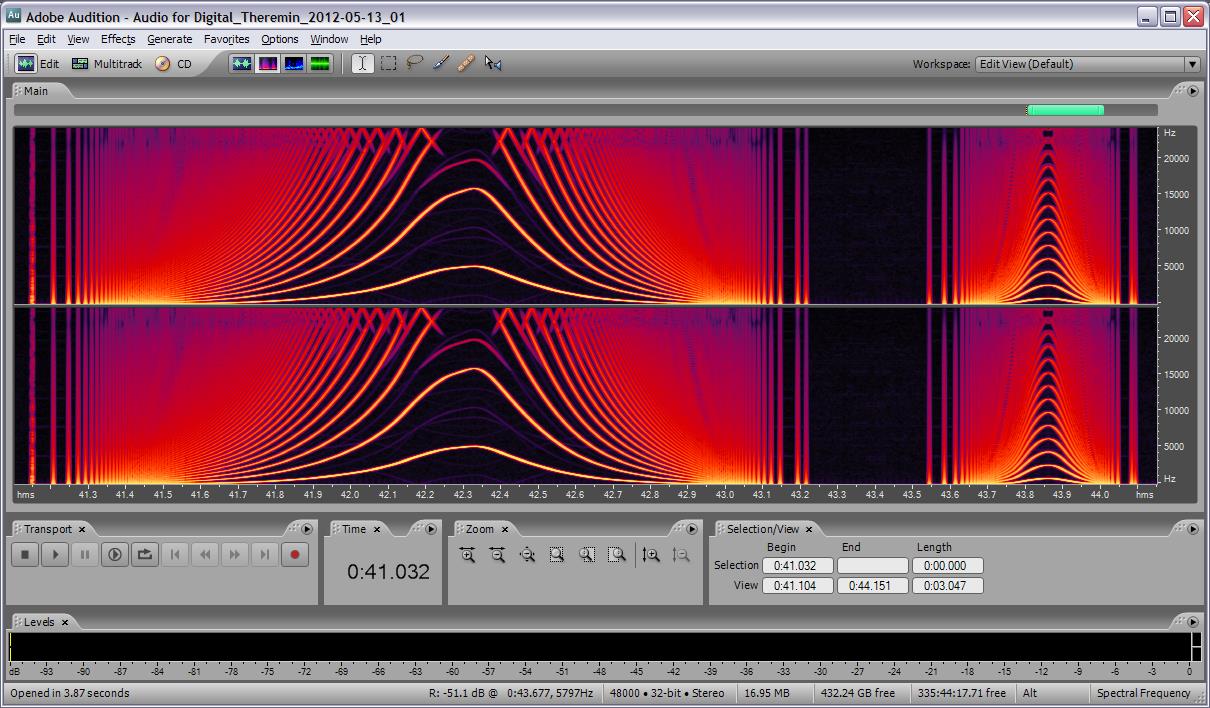Great demo, Roboni!
Very brave of you to be the first to actually show some of what the instrument is capable of. THANK YOU!!!
It will take time for us to realize just exactly what the potential of this new performance instrument is. Any new set of musical tools will need time for those talented and daring individuals to find a way to incorporate them into their musical vision.
For instance, if you really see the pitch correction as a "nasty toy", then that potentially creative avenue might be closed to you. As I've been experimenting with the Theremini, I've started to realize just how deep this thing is, and how much control the good folks at Moog have given us in such an early realization of this technology.
Myself, I really like the quantization, and after messing around with it for a while, I realized that there are a number of parts of it that are accessible via Midi (and then the lightbulb went on). Using a Midi controller pedal ( I use the old Digitech PMC 10, but there are many others with similar capabilities) I started creating setups where I could control the quantization continuously using a volume pedal, and found that this allowed me to really concentrate on the antennas, and define the pitches more or less sharply using the pedal, or just bring the quantization in for a particular passage or effect IN REAL TIME.
Also accessible via Midi is the defined musical scale, the root note for the tuning, and the low and high notes produced, which allows you to press a switch, send the appropriate Midi data, and update these things on the fly during the performance, so you can actually carefully mold the ranges you want to use at any given time while you concentrate on the antennas. There are lots of other parameters that can be instantaneously modified as well, making the possibilites for expression expand exponentially. And this is all before we even touch a preset (which can of course be accessed via Midi as well); these are just parameters that can be applied to the currently selected preset, which makes the fact that there are only 32 presets available a bit more tolerable. You can even shape the Animoog engine tones produced via Midi, so the concept of presets, is a way, almost becomes unnecessary with the proper Midi controls. If you send the proper Midi data, you could essentially create a complete preset from scratch!
So, as a new tool, I think that there are more than enough possibilities to keep new explorers busy and creative for quite a while (I can certainly see I've got a LOT of work ahead of me...). Now, I realize that there are probably a lot of people here that may not be thinking in the broader Midi possibilities that this instrument presents, but I'm hoping that I might be giving some of you some ideas about what could be accomplished here. In the bigger picture I see that you could even have the Theremini parameters under sequencer control (for those with larger setups or those who might already be using backing tracks). This would allow for complete parameter control linked to the musical score. Now we're gettin' somewhere!
Last night I was watching a Youtube video of an early ELP performance of the song "Knife Edge" where Keith used the early modular Moog to mostly make swooping glides, burbles and whistles for the solo. Sometimes the sound would cut out while he was changing patch cords, and then he brought out the the ribbon controller to make, well, more swoops and glides. It took time for him to imagine, create and realize his vision of this new instrument to make the impressive music we would begin to hear a short while later, and which have eventually become a part of this instrument's lexicon.
The takeway here; using the Theremini from the front panel is nice, but not much immediate control. Tapping into the many tools available through Midi gives a MUCH larger spectrum to work with. Like any good instrument, the biggest variable would be your imagination, and how you see using the available "knobs" to shape YOUR musical vision. Although this is a Theremin, it can also be much, much more than that.
What possibilities do YOU see?
On a side note, is it me, or does the volume antenna not make the most sense? I would much prefer to have the volume increase as I move my hand closer to the antenna, kind of like using a volume pedal, and not the other way around.
On my list of things to try is creating a patch in Midi to accomplish this somehow. Can it be done? Maybe!




